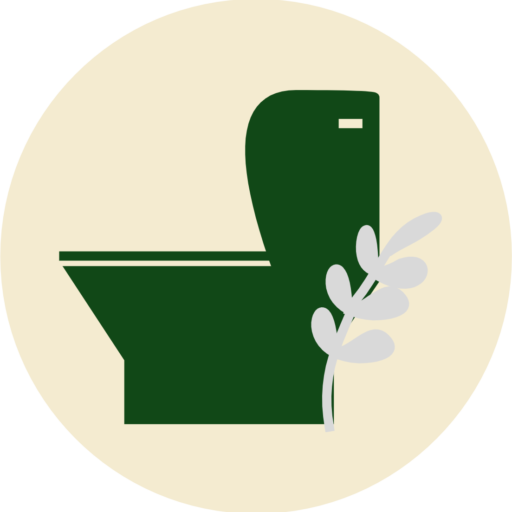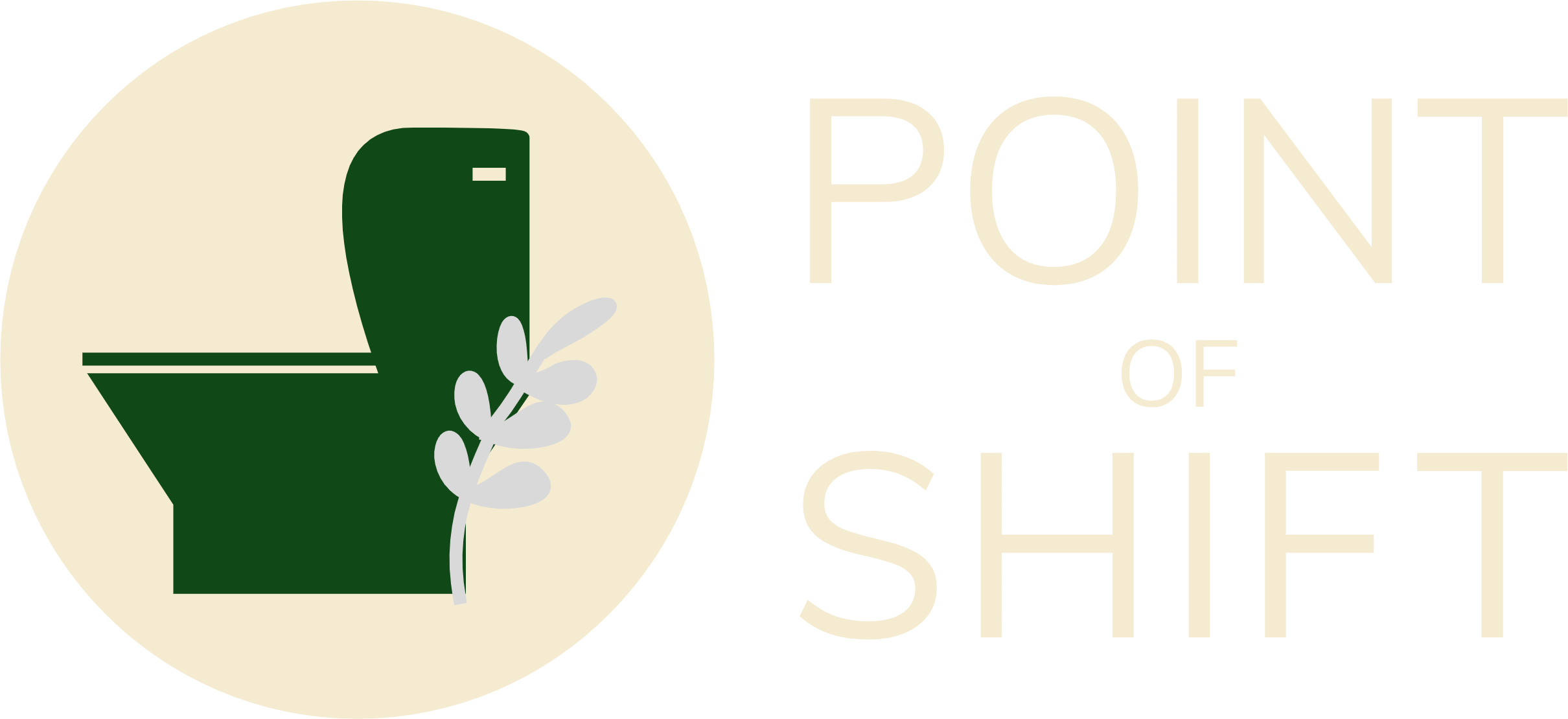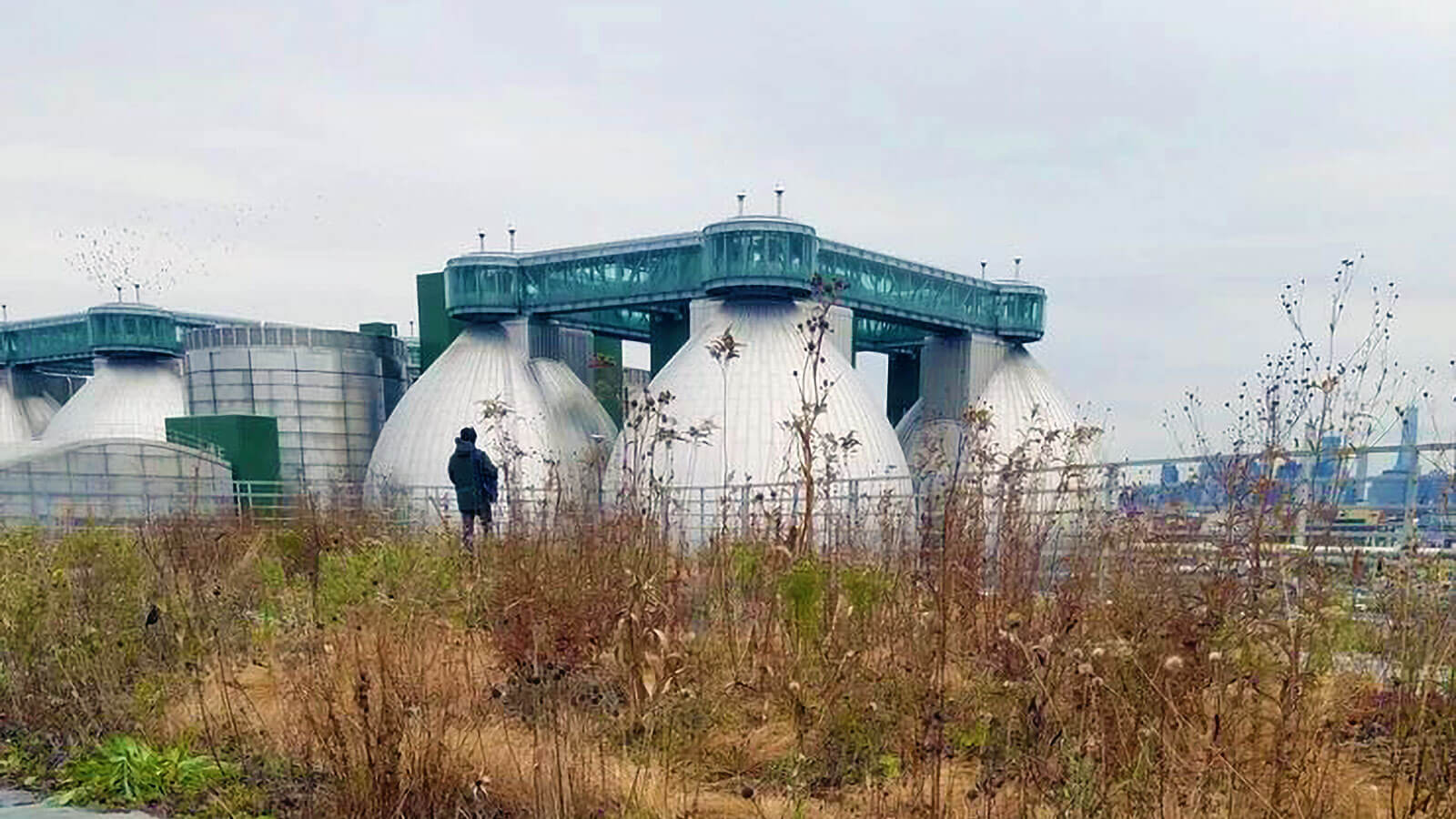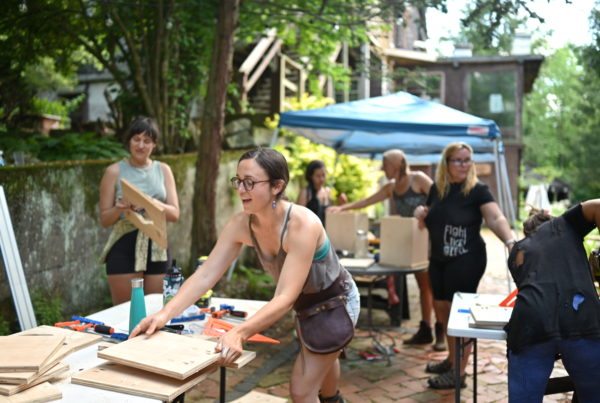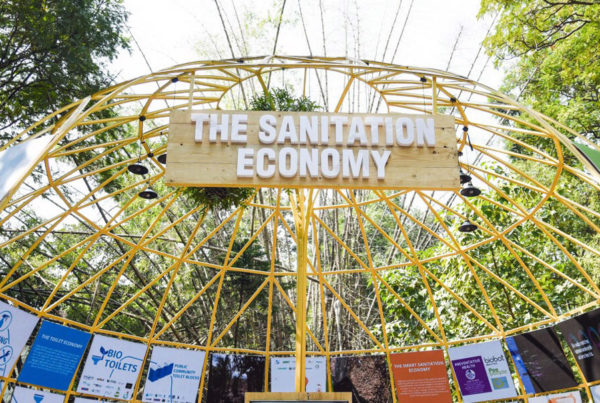We like to explain how sanitation systems work and why they matter – simply. Something that can be confusing – and misunderstood – is how sewers and circular economy are connected. If this has ever been a point of conflict or confusion – don’t worry, we got you because, in this blog post, we will clarify just that.
What are sewers?
Sewers are the pipes that can exist in urban (or densely-populated) places to move sewage (aka poo, pee, and other dirty water (including stormwater) from your toilet to its final destination. These pipes can be huge or small, but cities have thousands of miles underground to move waste using gravity and pumping stations.
Some vocab details: The system of sewer pipes is called sewerage. Sewage is the contents inside, and sewers are the actual pipes.
Sewers are not everywhere. First, they don’t work in more remote areas because there’s not enough water to push waste through the pipes and there are not enough people to justify the cost of implementation. Sewers can be prohibitively expensive to install; sewer systems cost billions to install, and the construction process is incredibly disruptive to daily life. But once they’re functioning, they can be quite cheap to run; other than the pumping stations moving sewage uphill, sewers rely on gravity to do the bulk of work, and it’s free!
What is circular sanitation?
Circular economies are the idea that different value chains in our consuming societies can be regenerative – from fashion to electricity – instead of having a definitive endpoint for everything we consume.
Circular sanitation generally refers to any waste system – coming from toilets or trash – that collects, transports, treats, and converts waste into a new product such as fertilizer, water, or energy. This means that our waste can be reused for another purpose!
These circular systems can be a simple toilet, such as a composting toilet where a user’s waste is composted into fertilizer with the help of microbes. Circular sanitation can also look like a biodigester (a bag or sealed compartment) that treats human and food waste with bacteria that break down the waste-producing gas that can be used for heat or electricity and fertilizer.
Where They Merge
Here’s where the confusion can set in: sewers aren’t where the circular sanitation options come into play – they just transport your poo and pee out of your home. The connection to circular sanitation happens at the wastewater treatment plants – the final destination for waste before it gets treated and made new.
Simply put, sewers are circular if they are connected to a wastewater treatment plant (WTP). WTPs convert human waste into several reusable products including energy, water, and fertilizer. Some wastewater treatment plants sell their compost to end consumers, such as DC Water’s Bloom and Milorganite (read Lina Zeldovich’s new book for more interesting details about this work). In the US, we have more than 16,000 WTPs that work on this magic.
Still, a majority of the compost that is produced at a WTP is referred to as biosolids. Biosolids have been applied at large volumes to agriculture in the US since the 1970s. WTPs use a combination of circular sanitation technology but most utilize biodigestion to produce a large amount of energy that is then utilized to power the wastewater treatment plant. Clean, treated water from this process is then released back into surrounding waterways to recharge local water systems.
The movement of creating reusable products from WTPs has been around for a while, though only in the last decade we’ve started seeing WTPs change their label to be water resource recovery plants. The original WTP term has felt a bit misleading and confusing to many – with the term “wastewater treatment,” we only see just a small fraction of what water resource recovery plants often accomplish. Over half of our sewer’s biosolids are used on land, helping us recover environmental landscapes while also reducing landfill intake. Especially as we start seeing more effects of climate change, we need to recognize that our wastewater has some valuable circular sanitation opportunities for us to tap. Some water resource recovery plants also include food waste in the treatment/recovery process, helping us manage sanitation more holistically while making better circular reuse products.
Why They Don’t Merge Everywhere
Some sewers are not circular and can run a bit dirty. Older sewer systems may have something called combined sewage overflow (CSOs), which exist where stormwater drains connect to the same sewers that your toilets do. CSOs are when sewer systems try to make sure wastewater treatment plants don’t get overwhelmed with rain from stormwater drains. To do that, CSOs have an override system that makes the sewers release their contents into waterways (like rivers and lakes) when a certain amount of rain hits the roads. CSOs aren’t nefarious – they are simply an old approach to protect expensive treatment plants from overloading.
And sewers usually use clean drinking water to flush toilets. It’s a pretty wasteful system, especially considering that your toilet water comes from the same water treatment plant that your tap water comes from.
But here’s the thing: sewer systems are not inherently linear or circular – they are just things that we use to move (and hopefully transform) our waste. They can be part of a circular system but are not an inherent circular system – it depends where the sewerage takes the waste. But they have a place in our sanitation ecosystem. Cities depend on sewers to take large volumes of waste away from citizens to be treated safely.
Can we work to redesign sewers (like most of our current public-serving systems) to be more circular? Absolutely. But is the solution removing sewers from the ecosystem entirely? We really don’t think so.
